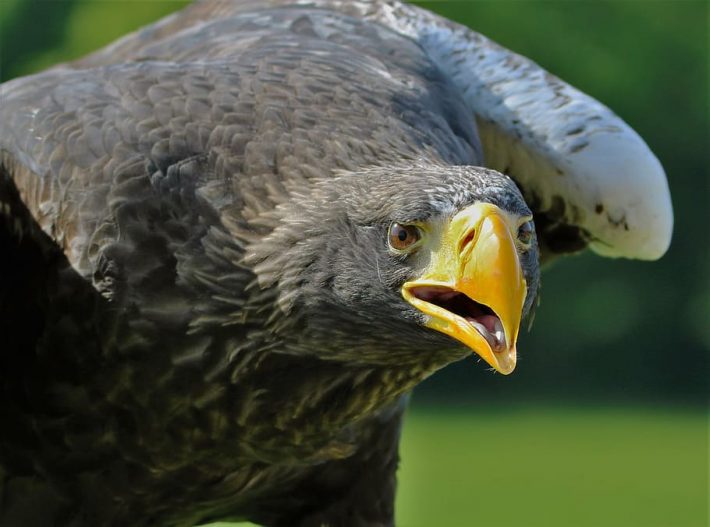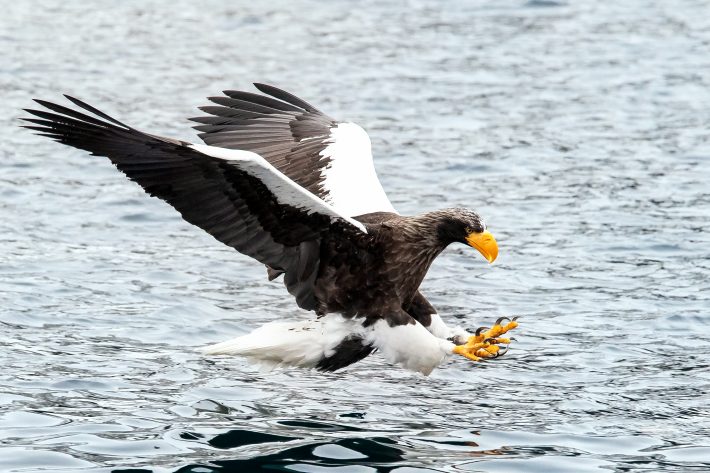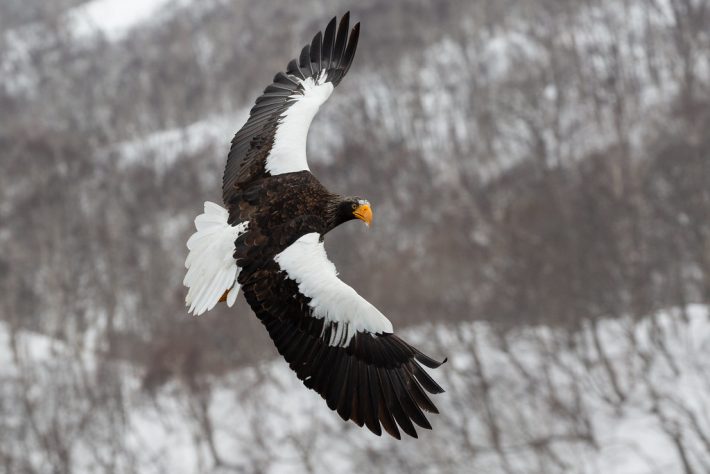Stella – The Steller’s sea eagle making a stellar economic impact
Research surrounding one viral bird’s big economic impact opens a wider conversation about the economic benefits of bird-related conservation.

When an interesting bird shows up in an unexpected place, it can be a big deal for both local economies and nature lovers alike. Southern Illinois University Carbondale researchers experienced this first hand as they studied a single Steller’s sea eagle making it’s way across North America in 2020–2021.
The bird in question, dubbed ‘Stella’ by birders, flew almost 7,000 miles from it’s home to Alaska. It was first spotted in August 2020 watching the COVID-19 pandemic rage onwards, before making it’s way to Texas in March 2021, and up to eastern Canada later that same year. Stella settled in Maine and Massachusetts during the winter of 2021, drawing curious onlookers into the harsh cold. But where is Stella now? Newfoundland is reported to be the bird’s latest pit stop.
Brent Pease, an Assistant Professor at the university’s School of Forestry and Horticulture, set out to quantify how such a bizarre – but natural – occurrence impacts the human-nature nexus, with his findings published in People and Nature.
More about Stella, and Steller’s sea eagles
A striking raptor with an enormous wingspan of up to 8 feet, Stella was bound to make an impression on the birdwatching community when it showed up so far from home. Steller’s sea eagles’ normal range includes parts of Asia such as eastern Russia, China, Korea, Japan and in the Sea of Okhotsk and the Bering Sea. However, their population is declining, with an estimated 4,000 birds in the wild.
Despite reports of birds so far off course being fairly common, Stella stirred up an unusual amount of interest across message boards and social media. “I started as a spectator – it was wild to hear of folks travelling across the country to see this bird,” explained Pease. “Then my research brain kicked in and I got the idea to quantify the economic impact it was having on tourist towns during what is usually the off-season.”
The bird buzz was impossible to ignore, with enthusiasts assigning it nicknames and even creating a twitter account on it’s behalf. “It was the perfect storm – people were feeling cooped up from the previous COVID-19 restrictions, and this was something to get excited about,” furthered Pease.

He had to move quickly due to the uncertainty of how long the bird would stay around the US. Pease began using eBird to track sighting reports, and searched Twitter for any tweets about it. “Myself and the research team were trying to find out as much information as possible about who was going to see Stella, and how much they were spending to get there.”
Birders have long been fascinated by vagrant birds – the term biologists use for birds found outside of their usual areas. The chance to see one is considered to be a once-in-lifetime opportunity. Scientists think many things could cause a bird to visit new locales; errors in a bird’s internal compass, wind drift, extreme weather and more. “It could even be a natural dispersal behaviour in search of a new home,” continues Pease. Whatever the reason, when a large charismatic bird like Stella arrives, often the tourism dollars do too.
Pease’s study asked people to estimate how much money they spent to travel and view the bird. A method called ‘willingness to pay’ was also used to estimate how much the spectators’ experience was worth to them beyond what they has already spent.
Stella’s stellar impact and the future of bird tourism
Results indicated that among the estimated 2,115 to 2,645 people who made the trip, the average person spent $180 (excluding travel time) or $277 (including travel time) to see the bird. Those numbers meant Stella generated between $380,604 and $476,626 of total spending, or $584,373 to $731,809 when travel time was considered.
“We also estimated that people were hypothetically willing to pay an additional $139,036 and $174,114 to see the Steller’s sea eagle,” Pease said. “These hypothetical spending dollars are considered the conservation potential of the species, where people would donate some amount of money to a birding non-profit to protect the species.”

This research highlights the importance of assessing nature’s contributions to people, helping stakeholders make decisions about conservation. Even rare birds that show up only occasionally can be important, albeit short-lived, economic boosts for communities if people come to see them and spend money.
“By showing that there is indeed an economic benefit to preserving bird habitats and promoting birdwatching tourism, our research can help people make better decisions about how to protect nature and derive its benefits in an increasingly unpredictable world that is marked by land use change, climate change impacts and other forces of social and ecological change,” ends Pease.
Read the full paper:
, , , & (2023). The Steller’s Sea-Eagle in North America: An economic assessment of birdwatchers travelling to see a vagrant raptor. People and Nature, 00, 1–11. https://doi.org/10.1002/pan3.10527
Like what we stand for?
Support our mission and help develop the next generation of ecologists by donating to the British Ecological Society.